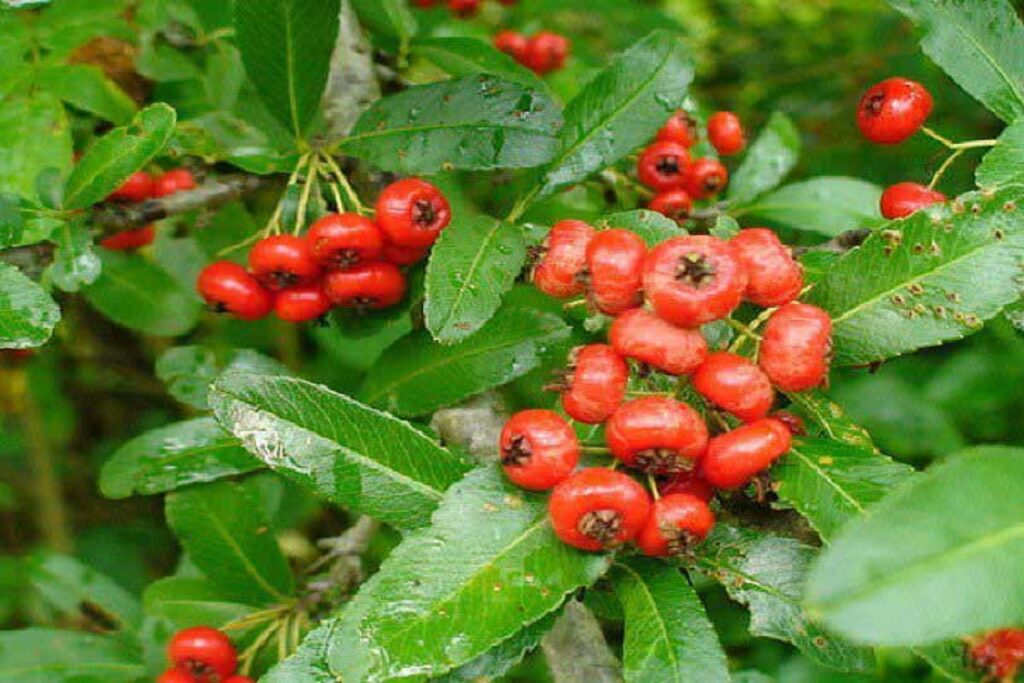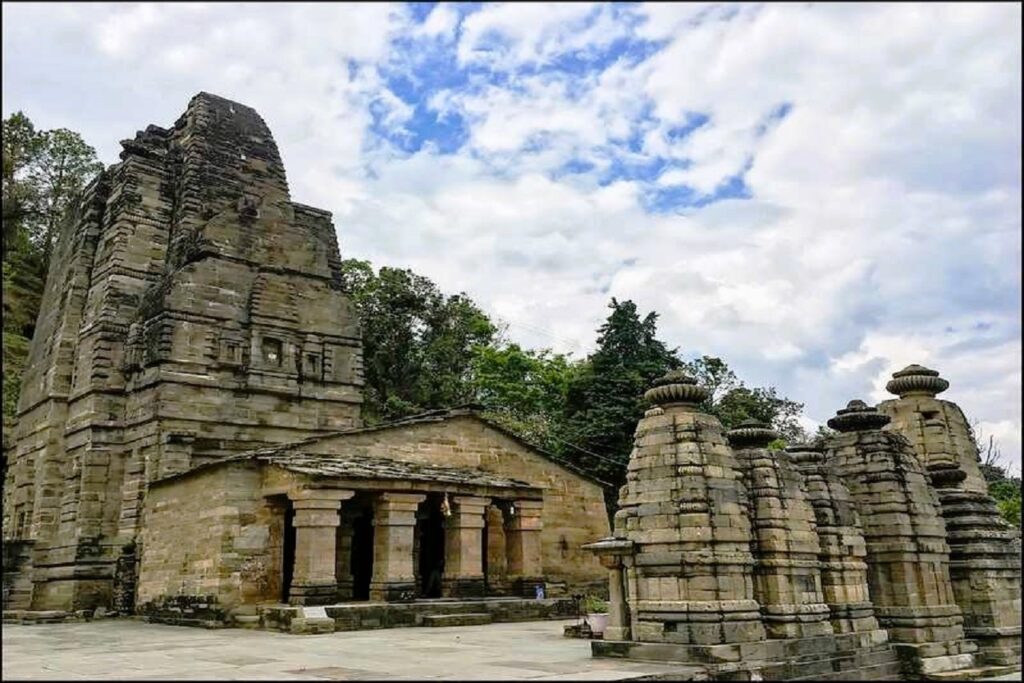Ghingharu (Pyracantha crenulata), commonly known as firethorn, is an evergreen shrub that belongs to the Rosaceae family. this versatile plant is well-regarded for its attractive features, including vibrant Fruits, glossy foliage, and thorny branches.
Physical Characteristics:
Ghingharu is a dense, multi-stemmed shrub that can reach heights of 3 to 4 meters. Its dark green, elliptical leaves are glossy and serrated, adding a lustrous quality to the plant. The thorny branches provide not only a deterrent to potential threats but also contribute to the plant’s unique appearance.
Flowers and Fruits:
During the late spring to early summer, Ghingharu (Pyracantha crenulata) produces clusters of small, white flowers. These blossoms are not only visually appealing but also attract pollinators. However, the plant is perhaps best known for its vibrant Fruits, which come in shades of red, orange, or yellow, depending on the variety. These fruits persist through the fall and into winter, providing a pop of color in the landscape.
Cultural Uses:
Ghingharu (Pyracantha crenulata) has found applications in landscaping and gardening due to its ornamental qualities. The plant is often used as a hedge or barrier, thanks to its thorny branches, which create a natural deterrent. Additionally, Pyracantha crenulata’s ability to adapt to different soil conditions and its resistance to pollution make it a popular choice for urban landscaping.
Wildlife Habitat:
Beyond its aesthetic appeal, Ghingharu (Pyracantha crenulata) plays a role in supporting wildlife. The fruits are a valuable food source for birds during the winter months, contributing to biodiversity by attracting various avian species. The thorny branches also provide shelter for small birds, offering a safe haven within its dense foliage.
Cultivation and Maintenance:
Ghingharu (Pyracantha crenulata) is relatively hardy and adaptable, thriving in well-drained soil and full sun to partial shade. Regular pruning helps maintain its shape, control its size, and encourage optimal berry production. While the plant is generally low-maintenance, occasional attention to watering and pest control may be necessary.
It’s important to note that the thorns on Ghingharu (Pyracantha crenulata) can be sharp, so care should be taken when handling or pruning the plant.
Ghingharu (Pyracantha crenulata), with its captivating fruits, glossy foliage, and functional thorns, stands out as an appealing and versatile shrub in both ornamental gardens and natural landscapes. Its adaptability, coupled with its role in supporting wildlife, makes it a favored choice for those seeking a visually striking and ecologically beneficial addition to their outdoor spaces.














